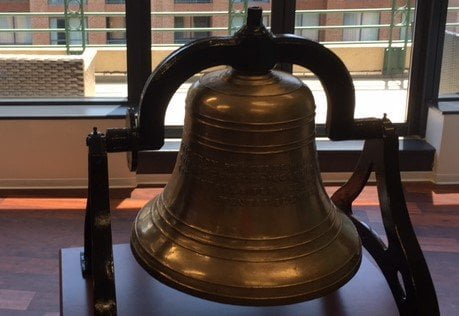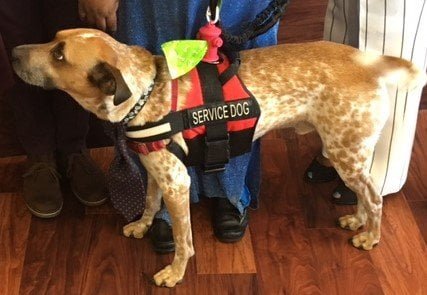Better Than Most is a regular feature of The Business of Giving examining the best places to work among social good businesses and nonprofit organizations.
Denver: This evening, we’re going to take a trip down to 500 Montgomery Street in Alexandria, Virginia, and to the headquarters of Mental Health America. We’ll begin with their President and CEO, Paul Gionfriddo, followed by some of the members of the MHA staff.

Paul: Mental Health America’s more than 100 years old but we’ve been functioning for the last several years like a start-up. We value highly our employees. I believe that some of the most creative enterprises, they can emerge from nonprofit, emerge from the brains of young and interested individuals who are working toward the betterment of society. For us, that’s people with mental health concerns and as a result to the work we’re doing, we think we’ve changed the way people think about mental health. From a public safety issue to a public health issue where we need to engage not at times of crisis but far before stage 4 to promote prevention, early identification and intervention, integrated health behavioral help and other services with recovery as the goal.
Valerie Sterns: What is the “wow” at MHA for me is flexibility: work-life balance. MHA affords you growth opportunities, support, even support when the outcome is not the desired outcome. MHA cares about not only my talent, but me as a whole person. We have a flexible work schedule. We can work two days from home. And that was incentive for me because I have a husband and two sons and it’s really hard for me to get time for myself. Across from the office is a wellness room, so if I need to take a nap and relax, take some time out for myself, I am afforded that opportunity. So certainly flexibility is certainly a great incentive to work at MHA.
 Kelly Davis: One of my favorite parts about working at MHA is really the open style of communication and lack of really enforced kind of power roles that exist. I think especially, traditionally in the nonprofit sector and in kind of government work. Because here, we are always making jokes with each other. We share a lot of memes online. We have a lot of inside jokes. Our CEO made his own meme. And we can shoot jokes back and forth. I mean when you work in nonprofit especially, a lot of the problems you’re working on are really serious and it can be hard to keep up with that stamina of working in such intense work. But when you have an environment that’s so open and can keep the playfulness, it’s easier for passion to stay alive. I would also say that the openness and the lack of intense structure mean that everybody’s ideas are important. So I’ve been here for two years and I can just walk into our CEO’s office and say, “Hey, this is a thing I think it’s important. And this is why I think it’s important. Can I do something like this?” And he gives me feedback. I’m 24 and when I talk to other people my age, that’s really, really rare. So I love MHA.
Kelly Davis: One of my favorite parts about working at MHA is really the open style of communication and lack of really enforced kind of power roles that exist. I think especially, traditionally in the nonprofit sector and in kind of government work. Because here, we are always making jokes with each other. We share a lot of memes online. We have a lot of inside jokes. Our CEO made his own meme. And we can shoot jokes back and forth. I mean when you work in nonprofit especially, a lot of the problems you’re working on are really serious and it can be hard to keep up with that stamina of working in such intense work. But when you have an environment that’s so open and can keep the playfulness, it’s easier for passion to stay alive. I would also say that the openness and the lack of intense structure mean that everybody’s ideas are important. So I’ve been here for two years and I can just walk into our CEO’s office and say, “Hey, this is a thing I think it’s important. And this is why I think it’s important. Can I do something like this?” And he gives me feedback. I’m 24 and when I talk to other people my age, that’s really, really rare. So I love MHA.
Siobhan Carpenter: I went in there the week before the conference and said, “You know, Paul, I think my service dog could use some extra trainings and things I’d like to work on with him to help him support me better. Can I use my personal development budget for that?” He said, “Make sense to me.” And we started training so we are now in our fourth week and he’s being promoted to level 2 this week. So just really, really great things that I’m really, really grateful for.
 Michael: Everyone that comes to our office is always wowed to its appearance and its openness. We have windows. We’re on the 8th floor and we can even see the Washington Monument and the dome on the Jackson Memorial. We see the airplanes flying in over the Potomac River. On the other side, we can look over one of our four balconies that are wi-fi capable and fully-furnished. We can look over and see United Way building and the MGM Casino and Hotel. It’s just a fabulous place. I think Sacha mentioned that it’s like being at home. And when we moved in, a lot of staff took the liberty to stay after hours and enjoy the snacks that we provide. It is always well-stocked. One of my responsibilities is to make sure that all staff had everything that they need to do their job effectively and efficiently.
Michael: Everyone that comes to our office is always wowed to its appearance and its openness. We have windows. We’re on the 8th floor and we can even see the Washington Monument and the dome on the Jackson Memorial. We see the airplanes flying in over the Potomac River. On the other side, we can look over one of our four balconies that are wi-fi capable and fully-furnished. We can look over and see United Way building and the MGM Casino and Hotel. It’s just a fabulous place. I think Sacha mentioned that it’s like being at home. And when we moved in, a lot of staff took the liberty to stay after hours and enjoy the snacks that we provide. It is always well-stocked. One of my responsibilities is to make sure that all staff had everything that they need to do their job effectively and efficiently.
Jennifer: So coming in, I get really wound up and worked up about things that… most of them are out of my control. And I think one of the most important things that a lot of the people who have been here for a while have told me is “It can wait.” That was a huge thing that really changed a lot of the ways that I worked around here.
We have an instant messaging system in the office called Slack, so there’s general threads where the entire staff is in or just individual threads and in the general threads, we also recognize people for the things that they’ve done well. So I think that’s been a really great way to keep people positive because when you’re facing such a colossal issue especially in the nonprofit world, it can get really tiring and very hard really fast. I think it’s called burnout. Well, a lot of people talk about burnout professionally where they just work 60 hours or 80 hours a week and you just get tired, but I think in the nonprofit world a lot of that burnout comes from being frustrated with things that you feel like you can’t fix and things that you care so much about. And that just little positive things bring you back up.

Sachin: One of the things I like about the way that we communicate now is that when we moved over to Slack, we were able to start looking at some of the statistics around how many fewer e-mail we ended up sending between each other and the office. I get a weekly rundown of how much we’re using Slack and it is frankly a little absurd how easy it’s made communication. Between the 24 of us, we send something around 3000 messages over Slack to each other every week. And on the other hand, our inter-office communication over e-mail has gone down by about 40% but what I really like about this is there are things that you just frankly send over a platform like that that you wouldn’t bother sending an email over.
Siobhan: There’s something about the culture of MHA and I’ve had a friend and we were doing lunch and she came by and I said, “Hold on, I need to finish up an email. You can just come walk around the office with me real quick. I’ll give you a quick tour before we go out to lunch.” She just walked around and she just was so amazed at how everything was just neat and organized, but open, inviting and modern. And the bell! She loved the bell — our Mental Health Bell — cast from the shackles of those who were in institutions, in psychiatric facilities years ago. And it just captures the essence I think of MHA and what we’re about. And the liberties that we have here.
Denver: I want to extend my thanks to those who participated in the segment – Valerie Sterns, Kelly Davis, Michael King, Jennifer Cheang, Sachin Doshi, and Siobhan Carpenter. If you want to hear this again, read the transcript, or see pictures of the participants and the offices of Mental Health America, all you need to do is go to denverfrederick.wordpress.com.

The Business of Giving can be heard every Sunday evening between 6:00 p.m. and 7:00 p.m. Eastern on AM 970 The Answer in New York and on iHeartRadio. You can follow us @bizofgive on Twitter, @bizofgive on Instagram and at http://www.facebook.com/BusinessOfGiving

